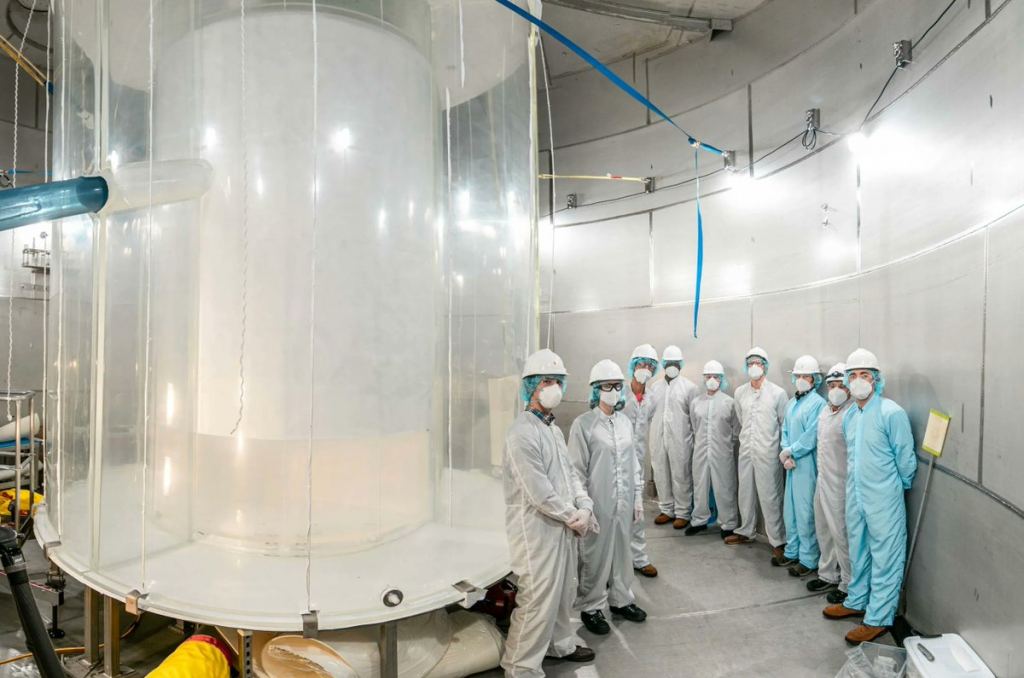Individual contributors have become less and less prominent in scientific fields as the discipline itself has matured. Some individuals still hold the public spotlight for their discoveries, such as Peter Higgs with the Higgs boson, which several other physicists also theorized around the same time he did. However, the actual data that eventually gave Dr.
Higgs and François Englert their Nobel prize were collected by the Large Hadron Collider, arguably one of the largest technical projects that took thousands of scientists decades to design, build, and test. Sub-atomic particles aren’t the only things that need large, complex detectors to study. With help from an underground research facility in South Dakota, a team from Lawrence Berkeley National Laboratory has developed, deployed, and tested the world’s most sensitive dark matter detection system.
The project, known as LUX-ZEPLIN, or LZ, has a history that would give any project manager nightmares. A team of 250 scientists and engineers from 35 different institutions collaborated on the project, whose primary detector was delivered to its underground home in South Dakota just before the COVID pandemic forced many of those participants to stay at home institutions for the next two years. UT video explaining the hunt for Dark Matter.
Despite all of LZ’s troubles, in December of 2021, it was formally brought online and began collecting data. That data formed the basis of a recent paper, proving that LZ is the most sensitive dark matter detector ever created. That is not to say that it actually saw any dark matter in its first run.
Notoriously tricky to detect using any method other than gravity, dark matter remains an enigma to this day. But scientists have honed in on a detection methodology that they think will help them understand it better, and it’s this technology that forms the basis of LZ’s system. Inside of the LZ’s main detector.
This would normally be filled with liquid xenon. Credit – Matthew Kapust A giant tank filled with liquid xenon comprises the bulk of the system, with an array of photomultiplier tubes (PMTs) that can detect when one of the myriad xenon atoms is smacked by a particle that could “mimic a dark matter signal. ” In that case, the atom lights up, which is then detected by one of the PMTs, which can also isolate the spatial area and direction the particle was traveling.
If the detector itself was above ground, too many of these particles would create too much noise compared to the dark matter signal. Hence, why the detector is located under the Earth’s surface at the Sanford Underground Research Facility (SURF). SURF also hosts other sensitive experiments that benefit from the shielding afforded by the Earth’s surface, so LZ fits right in with the rest.
Schematic (left) and illustration (right) of the LZ experiment in operation. credit – LZ Collaboration / LZ / SLAC So far, LZ has only a few months of operation, but even those results excite the team that had initially designed and built the detector. There’s plenty more science to come, though, with the plan currently to collect 20 times more data than has been so far.
Given the difficulty in detecting dark matter and science’s general penchant that more data is better, that sounds like an excellent proposition for finding dark matter if it does exist. Maybe the experiment with the Latin word for light in its name will be the first to shine some light on the mystery of dark matter. Learn More:SURF – Researchers record successful startup of LUX-ZEPLIN dark matter detector at Sanford Underground Research FacilityLBNL – The LZ Dark Matter ExperimentUT – New Dark Matter Detector Draws A Blank In First Test RoundUT – Searching for Dark Matter Inside the Earth Lead Image:Some of the team members responsible for the LUX-ZEPLIN experiment.
Credit – Matthew Kapust The post The World’s Most Sensitive Dark Matter Detector has Come Online appeared first on Universe Today. .
From: universetoday
URL: https://www.universetoday.com/156900/the-worlds-most-sensitive-dark-matter-detector-has-come-online/



